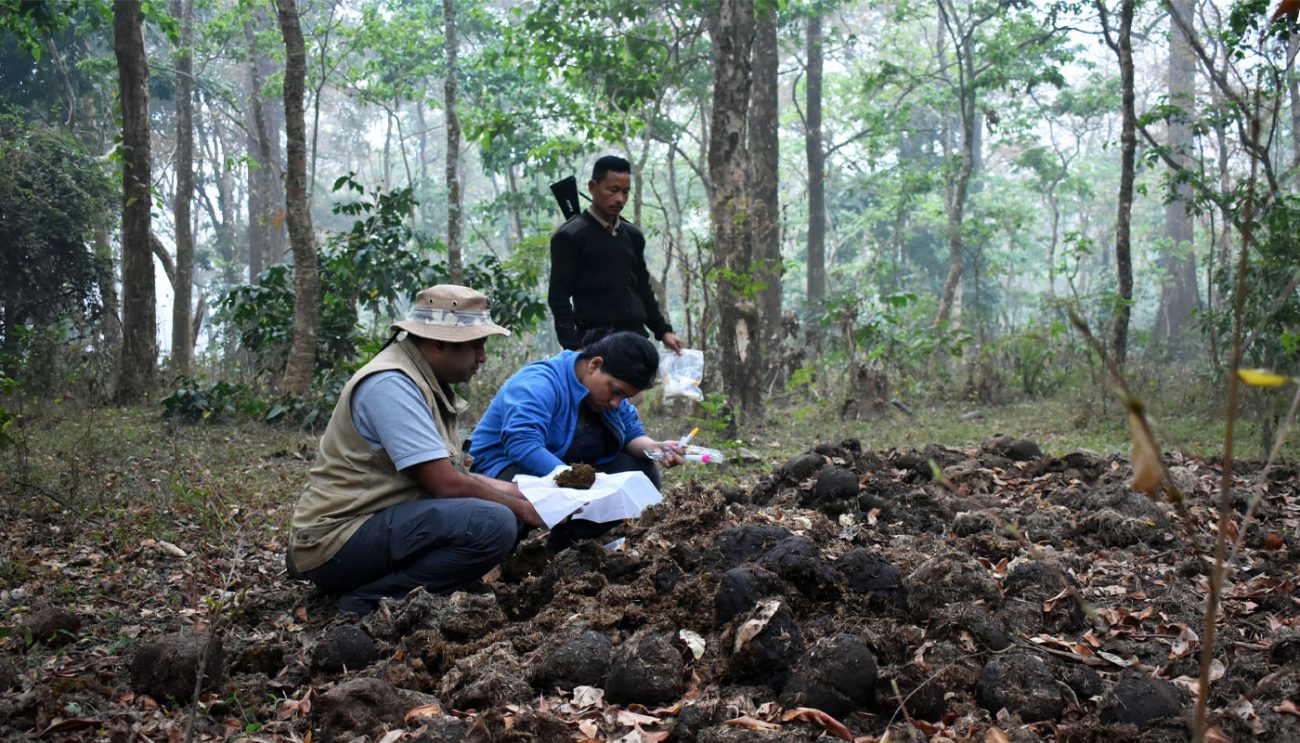Diseases the biggest non-poaching threat to greater one-horned rhinoceros, says report
Studies in Assam and Bengal reveal prevalence of endoparasitic infections

BY ROOPAK GOSWAMI
Guwahati, Oct 19: Diseases are the biggest non-poaching threat to survival of the greater one-horned rhinoceros, revealed studies in Assam (2019) and Bengal (2020) carried out by WWF-India.
The studies, on “Prevalence of endoparasitic infections in free ranging greater one-horned rhinoceros (Rhinoceros unicornis), reveal prevalence of endoparasitic infections.
Dung samples were taken to carry out the study.
Endoparasites are parasites that inhabit the internal organs and tissues of its host.
The trigger for the studies was the death of two translocated rhinos in Burachapori Wildlife Sanctuary in Assam, which failed to reveal much regarding the cause of death which might have been health-related.
“Poaching and habitat destruction are the most pressing threats to the survival of the greater one-horned rhino. Disease and the presence of large populations in isolated habitats also pose significant threats,” the study said.
“The need to initiate studies on diseases and pathogens affecting the Indian rhino is urgent as a considerable number of cases on rhino deaths go unaddressed. Due to increasing livestock pressures on some protected areas, there is a possible threat of pathogenic transference from domestic animals to wild animals. Additionally, a lack of data in India makes it crucial to initiate such studies to bridge the knowledge gap on rhino diseases, and to draw up measures to address a disease outbreak in the country,” the study added.
A total of 208 rhino dung samples were collected from Jaldapara National Park and Gorumara National Park and were screened for parasitic load using qualitative methods.
Overall parasite prevalence rate in both the parks combined is 88.46 per cent.
From the 109 dung samples from Gorumara National Park, 90 samples (82.56 per cent) were found to have moderate to heavy Strongyle spp. infection and out of the 99 dung samples analysed from JNP, 94 samples (94.94 per cent) were found with positive infection of Strongyle spp.
A total of 309 dung samples were collected from the four protected areas in Assam for a study on the prevalence of endoparasitic infections in the rhino population during 2018-19.
The overall prevalence of endoparasites were found to be 58.57 per cent. The overall prevalence of endoparasites was found to be 58.57 per cent, comprising four genera of endoparasites mainly Amphistome spp. with a prevalence rate of 17.15 per cent, Strongyle spp. with a prevalence rate of 43.68 per cent and two sporadic occurrences of Bivitellobilharzia nairii and Spirurid spp only in Pobitora Wildlife Sanctuary.
The Strongyles are nematodes or roundworms which occur primarily in Equines and other mammals like rhinoceros, elephants and rodents.
Amphistome spp. are found in a wide variety of domestic and wild herbivores and a light to moderate infection seldom causes any harmful effect on the host.
“Review of records from the rhino bearing protected areas (PAs) of Assam reveal that as compared to reported 217 deaths caused due to poaching, more than 600 natural deaths have been recorded during 2008-2018, meaning about 60 deaths every year. Post-mortem records reviewed as part of this study showed that there is a lack of proper laboratory investigation in the assessment of those 600 deaths. Documented causes of rhino deaths from 2008-2019 categorised under natural deaths include old age, infighting, predation and other unknown causes. Systematic scientific investigations could reveal more information in these cases reported as natural deaths,” the report on Assam said.
Amit Sharma, a senior official at WWF-India Brahmaputra Landscape, told NewsFileOnline: “All natural rhino deaths need proper investigation.”
Study procedure
Dung samples (weighing 100 gm) were collected and kept in plastic zip bags without any preservative and immediately dispatched for analysis. All
possible efforts were made to collect freshly voided dung samples not older than the previous night.
“When comparing the Bengal study with that conducted in Assam, we find that the rhino population in Bengal has a higher prevalence rate of infection, but the occurrence of different parasites were higher in Assam,” the Bengal study said.
“The studies have helped to set up a baseline for parasites. We are also working on bacteria and viruses which will take time,” Sharma said.
“Now we know what all parasite diversity exists. We are also trying to work on load factor,” he added.
Recommendations
1.The studies recommended a detailed post mortem of rhino carcass. The identification of the parasites up to the species level is very crucial and this can be possible if parasites are collected during post-mortem examination of the gastro-intestinal tract.
2. The study also recommended carrying out disease surveillance in domestic animals in the adjoining village areas of protected areas.
3. Repeat the study and conduct seasonal monitoring for parasites from rhino dung in both the protected areas..


